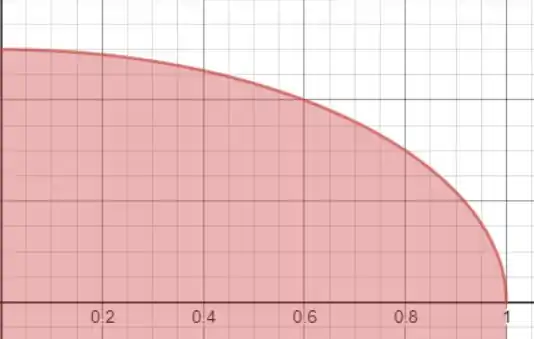Determine o centro de massa da região A dada
Passo 1
Para encotrarmos o centro de massa precisamos achar que são descritos por:
A figura fica assim:

Daí vamos achar uma função em função de :
Agora vamos achar a Área de A:
Vamos agora calcular.
Passo 2
Vamos usar substituição trigonométrica para esse caso. Imagine que temos o triângulo abaixo:
E seu cateto adjacente a vale e o cateto oposto vale com a hipotenusa valendo 1. Assim as seguintes relações valem:
Fazendo as substituições:
Agora que temos a Área de A vamos achar as outras integrais:
Vamos fazer aqui a substituição:
Passo 3
Agora substituímos:
Resposta
Resposta
Ei, a resposta está no passo a passo :)